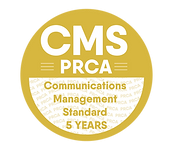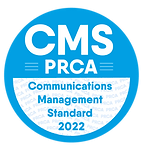PfG: A Living Document
01 November 2016 - by Anna MercerThe new Programme for Government was published last week, but what’s changed? We take a look at the differences between the new draft and the original.
What’s new?
The most notable difference in the new version of the PfG is the redesignation of almost all of what were previously referred to as 'Measures' becoming 'Indicators'. We counted no fewer than 37 Measures becoming Indicators, with a further five having slight semantical changes.
In terms of content, six new indicators have been added which are as follows:
-
% change in energy security of supply margin;
-
% water bodies at 'good' status;
-
Biodiversity;
-
Usage of online channels to access public services;
-
Overall Performance (NI Water);
-
Gap between the number of houses we need and the number of houses we have.
There are also delivery plans accompanying the indicators for most, with some still to be added to. These plans outline how each Senior Responsible Owner (SRO) plans to 'turn the curve', setting out the current status/baseline, as well as naming key delivery partners who will be responsible for implementing different aspects of the plan.
How will it be measured?
The document states that performance will be measured on the basis of three questions:
- How much did we do?
- How well did we do it?
- Is anyone better off?
It also confirms that the Executive will make an annual report to the Assembly on the progress against the indicators.
How will it be funded?
The PfG states that the Resource Budget will be allocated on a one year budget cycle to allow time to plan for fiscal adjustments expected in the Autumn Statement.
The Capital Budget has more clarity around it and so it will be on a multi-year basis to allow for long term planning
What else do I need to know? (Please note this section was updated on 04.11.16)
The consultation on the substantive PfG document is straightforward in terms of normal consultation practice; however it is advised that respondents treat the Delivery Plans as an opportunity for direct engagement rather than as a static document as they are 'live' and will be constantly evolving - both during and after the consultation process.
While this is positive in terms of government's determination to work with other organisations to co-design and co-produce, and it demonstrates motivation to begin the changed process of outcome-based approaches from now, this consultation does not follow normal ‘best’ practice (where the consultation narrative remains unchanged during the course of the public process) and represents instead a wider ‘engagement’ process.
Therefore respondents are encouraged to get in touch directly with SROs to make their views and ideas heard.
The document and delivery plans are being consulted on at present for a period of eight weeks, which runs until 23 December.
You can respond to the substantive document via SurveyMonkey or by submitting your views to pfg@executiveoffice-ni.gov.uk.
The full document and other information is available here. Details on SROs and how to contact them are on the front page of each Delivery Plan.








